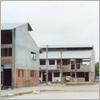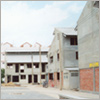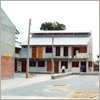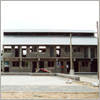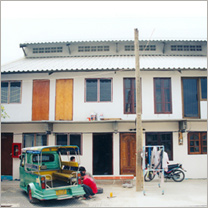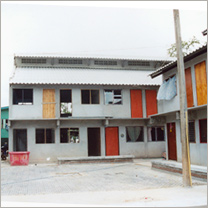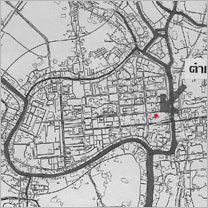 |
Background Carving out a place for poor communities in a historical city : UNESCO has designated the old Thai capital city of Ayuthaya a “World Heritage Site.” That’s good news for historic preservation, but a big problem for the city’s poor. On the oldest “island” part of Ayuthaya, where the monuments are and where the tourists go, most land is government-owned and the poor’s only housing option is in squatter settlements. The network in Ayuthaya has linked communities around the idea that poor people and historic monuments can cohabit in mutually beneficial ways. After carrying out a survey, in which they counted 53 informal communities in Ayuthaya (6,611 households), the network is preparing for a city- wide seminar to present their survey information and to begin exploring city- wide collaborative solutions which make room in the historical city for housing the poor, as in Nakhon Sawan. The former UCDO now CODI has been coordinating with NHA, the Municipality and the Departments of Fine Arts, which looks after the country’s historical monuments, in order to promote this idea. In the mean time, the communities continue their work with saving, credit, welfare and environmental improvements. |
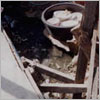 |
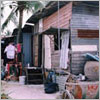 |
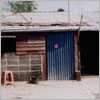 |
The Sala Poon community, built on flood- land near the Wat Pranomyong, recently used a UCEA grant to construct a concrete “ floating walkway” to connect their houses. The project gave a big boost to the whole network, and the community is now planning new house construction. Another community at Arkarn Songkroh is working with two young architects to prepare a pilot housing reconstruction project on the same site. |
Arkan Songkrao, Ayuthaya A pilot housing reconstruction project.
The people of Arkam Songkrao have collaborated with a group of young architects in redesigning their homes and community layout to improve both their home and environment.
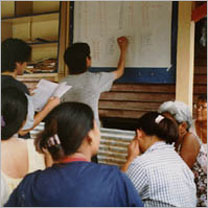 |
Workshops Through participatory workshops, the community designed three house types. The architects prepared drawings and built model representations of the peoples ideas.The house types included two floors with the possibility of expanding to two and half. The size of the plots were 30 metres sq. 3 x 10m., this dimension was agreed by the community . In tandem to the design process, the architects surveyed the needs of the people and their abilty in repaying the loans, used to construct their new homes. Saving groups and loan arrangements were arranged by UCDO. |
A survey looking at the abilty of repayement and spatial need of each family, divided the community into three groups. The groups paid 100, 500 and 700 baht/month respective to house size. The house schedules are as follows:
1. Two storey house with the potential of constructing another half a level. Overall price was 70 715 baht at monthly payements at 688 baht.
2. One storey with the potential of constructing another half a level. Overall price was 54, 495 baht at 530 baht/month.
3. One storey house with no toilet but people are able to build it later by themselves. Overall price 45,745 baht at 445 baht/month.
All house types have basic core structure, formed of concrete floors and cross-walls. The interior can be sub divided into four and six room arrangements. The adjacent walls are open and are to be filled with material depending on the owners resource, in most cases, materials from the old house.
House Type
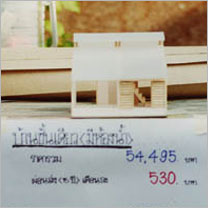 |
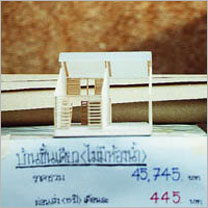 |
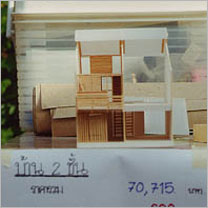 |
Group Site Planning
A carefully planned route of meetings and workshops threaded the communities considerations together into a site layout for all. The process was as follows:
1. The people chose a house type.
2. The formation of different house zones.
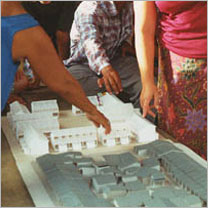 |
a. The community sub-divided into
smaller groups of 4/5 people, 7/8 people and third group of16 people.
This kind of grouping had been used before in the house design workshops,
so it did not take to long for people to form into groups they were
happy with. b. List the name of the members in a group and number of a group. c. Each group decided which zone they preferred and put a reservation on a site plan. d. Choosing plot, each group decided where each house should be within each zone, by considering each families needs, for example a person who wanted to open a shop requested a corner plot. The Arkam Songkrao site plan was divided into four zones. Each zone would allow space for a linking central community space, a form of a plaza, allowing group multi functional activities to take place. |
Community Design
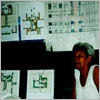 |
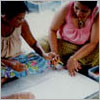 |
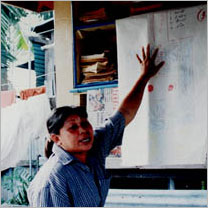 |
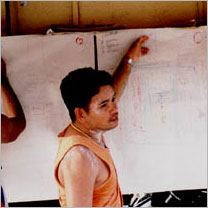 |
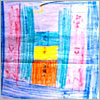 |
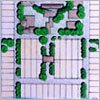 |
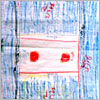 |
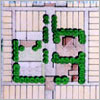 |
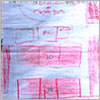 |
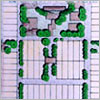 |
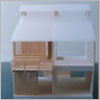 |
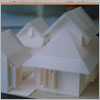 |
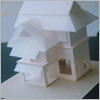 |
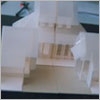 |
Construction
Discussions followed in how to go about building the new houses. Comparing advantages and disadvantages of running the project sector by sector or all the sectors at once, the people concluded that they wanted to construct the new community at the same time.
| It was agreed there was a need to hire
a building foreman to coordinate the construction activity and labour
could be hired from members of the community. There were skills within
the community that could be shared and exchanged in helping construct
together. The only work to be implemented by individual families would
be the dismantling of their existing homes in preparation of clearing
the site and the construction of additional extensions to their new
houses. Temporary Shelter It will be necessary to construct temporary shelter during construction of the new community, where though is yet to be determined. From group discussions there was concern that the land on which they temporally inhabit must not be located far from their working place, basically not far from their present location. Negotiations are currently going on to secure a site behind the present community for this purpose. With this agreement, construction will commence in March 2001. |
|
||||
|
